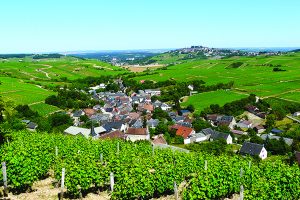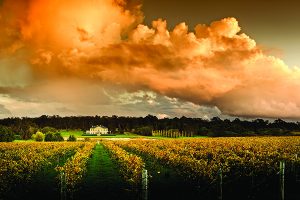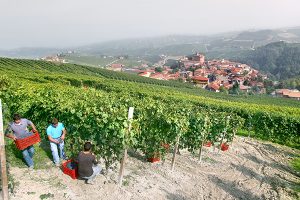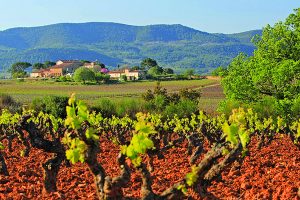Find out the answers to the Decanter wine region quiz, and read more details on the vineyards featured…
- Venissa, Mazzorbo
- Istria
- Wachau
February, and Carnival time in Venice. At Venissa, on nearby Mazzorbo island, it feels a world away. This ancient walled vineyard, restored by Prosecco producer Bisol, is one of the lowest-lying in the wine world and floods frequently. Underwater flood barriers are under construction, and yet the salinity gives the wine a unique character.
It’s not aggressive like sea water, says Gianluca Bisol, but partly sweet.The wine, made in tiny quantities from just 1ha of vines, is made from Dorona, an historical variety with yellow berries that was cultivated on the lagoon islands until 1400 before disappearing. Bisol’s latest plantings have been on ungrafted vines, made possible by the high sand content of the soil. The estate also houses orchards, vegetable gardens, a restaurant and fish farm plus guest accommodation.
- Valais
- Sancerre (Le Cul de Beaujeu)
- Rheingau
The vines in the foreground lie at the top of Le Cul de Beaujeu one of the most famous vineyards in Sancerre, at 250m-350m altitude. The gradient reaches to 60% in some areas, making the hand-harvesting of Sauvignon Blanc and Pinot Noir grapes mandatory. As impressive as the slope is its history. The name is a corruption of, an area planted by the Beaujeu monks in the Middle Ages, and said to have been the only vineyard to produce a white wine in the region before the vine disease phylloxera struck; the wine was reserved for clergy at the nearby St-Etienne Cathedral. The vineyards face southeast on Kimmeridgian marl soils, here called terres blanches, often with limestone pebbles on the surface called caillottes. At the foot of the hill is the village of Chavignol, famous for goats cheese, and in the distance the curved stone St-Satur viaduct, with the hill of Sancerre to the right.
- Sonoma
- Margaret River (Fraser Gallop Estate)
- Sussex
Known simply as Block 3, this 7ha Chardonnay vineyard in the upper Wilyabrup Valley lies just 6km from the Indian Ocean, and cool ocean breezes and lower night-time temperatures moderate the warm, dry climate. The soil structure (gravelly loam over impervious clay) mean that irrigation is unnecessary, even in the driest summers. Planted in 2000, the vineyard Chardonnay is the Mendoza clone rarely used outside Margaret River. This typically produces what growers refer to as hen and chicken fruit: large and small berries on the same bunch.
As well as the Estate and Parterre (wild ferment) Chardonnays, the vineyard also produced an ice-pressed dessert wine for the first time in 2013, the grapes handpicked and frozen to replicate the conditions of a Canadian ice wine or German eiswein. The neo-Georgian building pictured is home to the owner Nigel Gallop and his wife Dorothy.
- McLaren Vale
- Macedonia
- Colli Pesaresi (Rive Vineyard)
This is the stunning view of fragrant yellow Spanish broom and the azure blue Adriatic Sea that greets workers at Luigi Mancini’s Rive vineyard. Lying 80km north of Ancona in the eastern Marches region of Italy, the vineyard is in the Mount San Bartolo Natural Park near Fiorenzuola di Focara in the province of Pesaro. The vines here are Pinot Noir (Nero), planted on chalky sandstone at 150m altitude during the Napoleonic Empire. For five generations (since 1861) the Mancini family has reproduced these original clones. Just 100m from the coast in some places, the vines enjoy sea breezes that temper the summer heat, giving the Pinot grapes excellent ripeness and aromatics; acknowledged in 2000 when a DOC was granted for Colli Pesaresi Focara Pinot Nero. Fattoria Mancini is one of only two producers of this DOC wine. Grapes are hand harvested and immediately put in a mobile cooling cellar that is driven to the vineyard each day. After a traditional fermentation, the wine then spends 12 months in new and used French oak barrels.
- Penedes (Mas La Plana)
- Marlborough
- Mendoza
Fittingly, the Torres family home in Penedes, north-eastern Spain, sits among the vines that are used to produce its flagship wine â one of the countryâs iconic reds. Mas La Plana put Torres on the fine wine map when its first vintage (1970) triumphed over some of the worldâs most famous wines, including Château Latour, at the Paris Wine Olympiad in 1979. The wine and its 29-hectare vineyard is 100% Cabernet Sauvignon, a grape almost unheard of in Spain when the vineyard was first planted in 1966. (Replanting means that vine age varies over the vineyard area, but some of the original vines remain.). The deep, porous gravel and limestone soils and Mediterranean climate lend an aromatic intensity and sweet tannins to the wine, which has seen longer skin contact and more new oak in recent vintages.
- Barolo (Paolo Scavino, Bric del Fiasc)
- Tokaji
- Savoie
The Nebbiolo grapes from this 2.5-hectare vineyard were always so good that in 1978 Enrico Scavino persuaded his father Paolo to vinify them separately and show the potential of the Bric del Fiasc terroir. Since then this single-vineyard Barolo, made from vines planted between 1938 and 2012, has been known for its finesse and power, and is the estate flagship wine. Set against the backdrop of Annunziata and La Morra villages (pictured here), the vineyard falls within the Castiglione Falletto commune, near the centre of the Barolo region. Facing southwest at an altitude of 260m, the vineyard has a complex terroir: a mix of Tortonian and Helvetian soils, fossils, limestone and sandstone. The Scavino family has owned the vineyard since its winery was established in 1921 by Paolo’s father Lorenzo.
- Maule Valley
- Yarra Valley
- Provence (Chateau La Tour de lâEveque)
Located in a valley basin beneath the Maures hills in Provence‘s Var region, Château La Tour de l’Evèque is a large family-owned estate producing red, white and rosé. Cooling sea breezes rush through a gap in the hills, helping to preserve acidity in the grapes welcome relief during the hot summer days which draw holidaymakers to Provence (the estate used to be the summer residence of the archbishops of Toulon) but are less welcome to winegrowers. A cocktail of grape varieties is planted, on varied soil types; pictured here are 40-year-old Cinsault vines, planted on soils composed of shale and red sandstone. Six of the estate’s 89 hectares are left to rest on a rotating basis, with the fallow land used to grow barley this natural practice eradicates nematodes in the soil, and the barley is ploughed in to be used as green manure.















